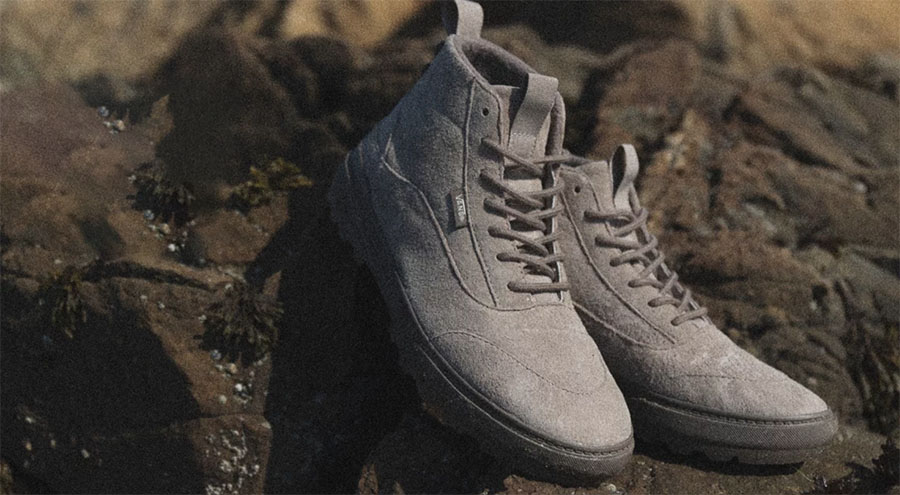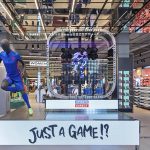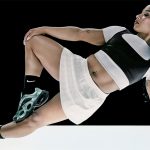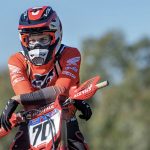VF Corp.’s Active business had a tough fiscal fourth quarter but the segment’s results were heavily impacted by continued issues with the Vans brand.
Active segment sales, which includes Vans, Supreme, Eastpak, Jansport, Kipling and Napapijri, were down 11.3 percent to $1.13 billion 9n the 13-week period ended April 1 from $1.28 billion in the prior-year quarter. Sales were down 9 percent on a currency-neutral basis. Operating profits declined 33.2 percent to $113.5 million in Q4, compared to $170 million in fiscal Q4 2022.
Vans revenues were down in Q4, as management expected, declining 14 percent (-12 percent constant-currency) to $857.0 million from $991.2 million in the prior year fourth quarter, but management said they saw “encouraging green shoots from new product launches” and “increased focus on maximizing existing product platforms.”
VF Corp. Interim President and CEO Benno Dorer said the two emerging product lines of focus, UltraRange and MTE, were up 51 percent and 34 percent, respectively, for the period.
“We are just scratching the surface on these,” Dorer suggested. “We also demonstrated that we can energize Vans’ fan base when we have meaningful product news. In Q4, we had a highly successful start of our retro-inspired new school platform. This new shoe shows the potential to grow into a meaningful growth driver for Vans over time. A global Vans family membership grew to 28 million members by the end of Q4 nearly twice the number from two years ago. Clearly, there’s much work ahead of us, but there are encouraging signs for us to build on.”
North America reportedly remained challenging for Vans in the fourth quarter, with sales declining 18 percent in the region. Vans slipped 2 percent in constant-currency terms in the EMEA region. The lone bright spot was the APAC region where Vans was up 2 percent in constant-currency terms (-7 percent USD)in Q4, but sales were down 4 percent in reported USD terms.
VF management was clear to point out that they expect Vans to return to growth during the course of the second half of the current fiscal year.
“The right work against our strategy at Vans is progressing and will lead to that business starting to turn around later this year,” said Matt Puckett, CFO of VF Corp. “We’ve got a powerful portfolio of brands positioned to benefit from strong and growing tailwind marketplaces. And our 30,000 associates around the world are consistently delivering the things that are necessary to win in the marketplace today and set us up for growth into the future.”
So our plan is working, we’re on track. We feel really good about where we are and the direction that we’re heading and the opportunity ahead.
“Importantly, Vans will return to profit growth for the full fiscal year and even ahead of its return to revenue growth aided by cost savings and SKU simplification,” Dorer shared. “The Vans team is operating with a great sense of urgency and projects are on track. We continue to strengthen our team. Our new brand campaign launched in April. We are sharpening our go-to-market process with a focus on digital.”
Dorer continued, “We will increase our product development investment in fiscal year ‘24, tease our new pinnacle premium line at the Paris Fashion Show next month and aggressively drive UltraRange, MTE and new school while seeding the Style 93 women’s felt Sandal launch now for a full launch this fall. More innovation will follow. Our consumer understanding work is in progress sharpening our focus later this calendar year and we are improving our shopping experience with a significantly reduced SKU count throughout 2023.”
Dorer was asked about the wholesale versus DTC trends and SKU count reduction process at Vans.
“So as you think about the fiscal year, what we’ve commented on is that we’ll return to sales growth sometime during the course of the back half, but that will be growing profit in the full year, even ahead of sales growth,” Dorer offered. “That’s what we predicted in February, that’s what we’re predicting today. So the plan is really unchanged, and the work is on track and executed with a great sense of urgency.
“As you think about DTC versus wholesale, we certainly expect DTC to grow quite a bit ahead of wholesale, given the issues that Matt reported on, which affect Vans, but frankly affect our whole industry. But in DTC, you should see the movement earliest, then you should see growth in the channel for the fiscal year. Everything else, all the work, including SKU simplification, is on track. We are rolling out a new store layout with improved merchandising, and we will be done with that by the end of 2023.
“And we expect the SKU count by the end of fiscal year 2024 to be about 30 percent lower than what it was at the end of fiscal year 2023, all very consistent with what we talked about, all very consistent. All focused on product and consumer engagement on productivity, on organization, on cost efficiencies, all on track and proceeding with a great sense of urgency.”
Another analyst question concerned the opportunity to grow the key Vans franchises.
“So as we analyze where we stand with the consumer, which is what we’ve done a lot of over the last six months, we realized that there’s a big opportunity taking franchises that are out there, but have a very low awareness to the next level,” Dorer responded. “And that’s why there’s a bullish on MTE and on Ultra Vans. Awareness generally on both platforms, even though they’ve been around for several years, hovers at around 10 percent and even loyalist advances show awareness of below 30 percent on those two.
“So what we’re focused on, in general, in Vans is to tell fewer bigger stories and dedicate ourselves more to platforms, an MTE and UltraRange are two. So we’re building awareness, and we’re backing it up with new product news, and we’re reintroducing these platforms to consumers, and that’s what’s working. UltraRange plus 51 percent, MTE plus 34 percent. And they’re both part of what we call Progression, and Progression is about 30 percent of Vans.
“So these absolutely have the potential to be very meaningful for the brand in the future. And that’s perhaps the model, this platform approach and building awareness over a longer period of time that we’re also applying with new schools, which we’ve seeded in Q4 very successful, sold out within two weeks. We are leaning into inventory and things that could be meaningful.
“And just this last week, we began seeding a new women’s sandal. We call it Style 93 that is going to see a full launch this fall. And we’re also very bullish about this and the ability to turn it into a meaningful platform. So this is a change in how we treat new products. Fewer stories, bigger stories backed with more money over a longer period of time in order to make them more sticky. This is a good approach that’s showing some really strong green shoots as a proof point that we’re effectively able to engage consumers when we have relevant product news, and we tell stories in an engaging way.”
Looking at other brands in the street lifestyle genre, VF said they “delivered sequential improvement” in both the Dickies and Supreme brands, which stabilized in Q4 behind very strong growth in key market Japan.
“We’re going to see improving results in both Supreme and Dickies. And both of those brands, we expect to grow,” Puckett added.
“The [Supreme] business performance was clearly uneven in fiscal 2023,” said Puckett. “We are now planning more modest growth in fiscal 2024 before accelerating in fiscal 2025, benefiting from geographic expansion, the pace of which will begin to quicken starting this fall. We remain confident in the brand’s long-term growth potential, which will benefit from increased access to the brand through both geographic expansion and further penetration in current markets, along with product category extension opportunities with current consumers.”
On Supreme, which was acquired by VF in 2020, the company recorded an impairment charge of $313 million in the quarter.
Active segment full-year revenues fell 9 percent (-5 percent constant-currency) to $4.90 billion from $5.38 billion in the prior year. Segment operating profit was $654.7 million in fiscal 2023, compared to $979.7 million in fiscal 2022.
For the full year ended April 1, Vans posted an 8 percent decrease in revenues in constant-currency terms and a 12 percent decline in reported USD terms. The brand was down 10 percent for the year in the Americas but posted 2 percent constant-currency (-9 percent USD) growth in the EMA region for the year. APAC revenues were down 18 percent in constant-currency terms for the year and fell 23 percent when evaluating the business in reported USD terms.
The Dickies business, which is tracked under the Work segment with Timberland Pro but is a solid street lifestyle brand as well, declined 3 percent for the quarter, flat in constant-currency terms, to $191.5 million, from $197.0 million in the prior-year quarter.
The Dickies brand business in the Americas region declined 5 percent in reported USD terms in the quarter, or a 4 percent decline in constant-currency terms. The brand saw revenues jump 33 percent in constant-currency terms (+25 percent USD) in the EMEA region in Q4 but saw business decline 16 percent constant-currency in the APAC region in the period.
For the full year, Dickies declined 11 percent in constant-currency terms (-13 percent USD) to $725.2 million from $837.7 million in the prior year. Dickies posted a 15 percent decline in the Americas region for the year and a 20 percent constant-currency decline (-28 percent USD) in APAC for the year. EMEA sales surged 34 percent for the year in constant-currency terms and were up 20 percent measured in reported USD terms.
Editor’s note: For the SGB Executive report on the full VF Corp. business, go here—EXEC: VF Sees Weak Vans, Timberland Offset Strong TNF In Mostly Flat Q4
Photo courtesy Vans (Colfax MTE-1)
















